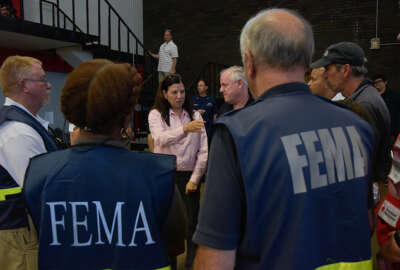As Hawaii nervously watches the approach of Hurricane Lane, FEMA ponders the upcoming season. The agency gave itself a long list of recommendations following last year’s hurricane season.
That difficult period resulted from a trio of big storms: Harvey, Irma and Maria. Think of them collectively as HIM (two female names notwithstanding).
FEMA’s July self-examination report disclosed several problems. For example, states were under-prepared with resiliency plans of their own. Not enough FEMA employees had received disaster work certifications. FEMA’s own processes for people to apply for assistance are too complicated. It didn’t have enough people in the first place.
Moreover, the agency didn’t fully use what it calls open-source preparedness information that might have helped in Puerto Rico and the U.S. Virgin Islands. Too little interaction between first responders and the critical infrastructure sector took place. On that last point, I’m not even certain Puerto Rico’s electric power is fully restored yet. Regardless, FEMA Administrator Brock Long found enough problems that he’s calling for a revision to the National Response Framework.
Amazing fact: Florida’s jurisdictions as a group issued evacuation orders for 6.8 million people, “contributing to one of the largest sheltering missions in U.S. history.”
FEMA deployed 13,000 of its own people, and enlisted more than 4,000 other civilian feds. The Defense Department deployed another 14,000.
Every number connected with HIM is big. FEMA distributed $2 billion worth of commodities like water bottles to the affected areas. Its National Urban Search and Rescue Task Forces scoured 30,900 buildings, looking for people. More than 4.7 million households registered for federal assistance after the three storms.
Not a lot of this came up at this week’s confirmation hearing for Peter Gaynor. He’s the White House nomination to be deputy administrator of FEMA. He was chief of Rhode Island’s emergency management agency, so he presumably knows something about coastal storms.
What did come up was FEMA’s other “HIM” problem — allegations of sexual harassment surrounding former HR exec Corey Coleman. He quit in June. Long put him on administrative leave in April. Long told the Washington Post in July he thought some of the alleged activities might be criminal. And that the problems go beyond Coleman. Allegations, statements and reports number in the hundreds.
At his hearing, Gaynor told senators that FEMA needs to invest more in its people. He went so far as to say the lack of investment might have contributed somehow to the lurid harassment/abuse situation. The Government Accountability Office reports last year pointed out the agency’s difficulty in dealing with employee misconduct of all types.
To his credit, Long seems to be all over the Coleman matter. If confirmed, sounds like Gaynor would be a good reinforcement.
FEMA needs to get around its “HIM” issues.
Copyright
© 2024 Federal News Network. All rights reserved. This website is not intended for users located within the European Economic Area.
